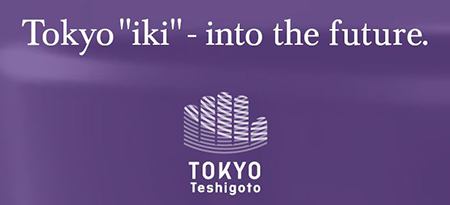Tokyo Mujizome
(Plain Dyeing)

- The sought colors were all present in the natural world.
- Mujizome (plain dyeing) is one of basic dyeing methods, dyeing white textile of Ittan (about 13 m) long using the colors preferred by a client. Color sample includes a total of 170 colors with slight shadings. On the textile with various thickness and patterns, it is not easy to reproduce colors in line with client’s order. Without a blueprint for colors, a craftsman mixes dyes of basic 5 colors to make ideal ones. Craftsmen arrange their physical condition to have a sharp sense of colors, and do not meet any guests during the work to keep their concentration. Mujizome is said to have started from ancient vegetable dyeing method and to reflect natural colors to clothing. Natural colors wear well, and they feature sophisticated elegance. Once-dyed Mujizome can be dyed again to another color, and many clients change colors according to their age. In addition to tailor-made products, they manufacture stoles according to craftsmen’s sensitivity. Their shaded colors are popular because of their possible combinations with any dress. Recently their products attract various industries other than Kimono, and craftsmen are trying to use the color gradations from designers and to dye bamboo blinds.
| Main Areas of Manufacture | Shinjuku Ward, Nakano Ward, Suginami Ward |
|---|---|
| Designation/ Certification Date | August 15th, 1991 (Tokyo Certification) |
| Traditionally Used Raw Materials | Raw (undyed) textiles, Marseilles soap, degumming aid agents, silk plain textiles, plant-derived dyes, chemical dyes, dyeing aid agents |
Traditional Technologies and Techniques
- Degumming:
Raw (undyed) silk textiles and yarns contain sericin (a protein), along with fats and other natural impurities. Degumming (also known as scouring) removes such impurities while leaving behind fibroin, a different protein that gives silk its characteristic high-quality texture and luster. - Pre-treatment:
After degumming, the silk textiles and yarns are agitated in pure water to thoroughly remove any solvent left behind by the degumming process. - Ji-ire:
In this process, the degummed plain textile is spread out flat. The textile is then immersed and soaked in water to which acetic acid and boiling water are added. This process prevents spottiness resulting from uneven dyeing. - Neutral-bath dyeing:
This dyeing method takes advantage of the unique characteristics of silk such as its physical feel, its close fit to the body, its luster, its rustle (the distinctive sound when silk is worn), etc. Such elements are what distinguish high-quality silks from other fabrics. - Color matching:
The color of dyed textiles is adjusted to match a sample based on the three color properties of hue, intensity and value (lightness or darkness of the color). To ensure that textiles attain the same color as the sample, dye concentrations must be increased in a balanced manner. - After-treatments:
Dye-fixing
This process is carried out after dyeing to fix the color as a post treatment. It also enhances the wet-fastness of the dyes.
History and Characteristics
From ancient times to the present day, the most basic dyeing technique among many is that of plain dyeing (dip dyeing). This technique started with dyes derived from plant roots, flowers, leaves, bark and fruit, etc., being used to apply color.
With the arrival of Buddhism in Japan (552), there also arrived in the country both natural indigo and safflower dyes. During the Nara and Heian Periods (710-1185), dyeing techniques unique to the Yamato peoples (the dominant race in Japan) were established. Forms of plain dyeing (dip dyeing) that proved popular during this period were texture, gradation and tie-dyeing, etc.
Woven silk textiles were developed as Japan entered the Kamakura Period (1185-1333). Lye, iron mordant and vinegar compounds necessary when using plant dyes also began to appear at around this time. As a result of such developments, there were great advances seen in immersion dyeing techniques.
There is the saying, "Edomurasakini Kyokanoko," which translates to "Edo is best for purple, Kyoto for kanoko." This refers to the situation regarding dyeing techniques during the Edo Period (1603-1868). Edo was felt to be the best city for purple-colored dyed goods, and Kyoto the best for tie-dyed cloth (particularly that dyed using a technique called "kanokoshibori" which produced a pattern of tiny rings). This simple saying went as far as to highlight the features of the dyed goods in the two cities.
In such ways, plain-dying as was represented by Edo Murasaki (Edo purple) and Edo Cha (Edo brown) came to be widely loved as part of Edo's common culture.
In modern times, the plain dyeing process focuses on tasks carried out by hand. It is possible to take solid-colored textiles, remove their colors and re-dye them in different shades. With textiles, it is possible to first select a bright and cheerful color, and then later replace it with a traditional purple, blue or brown, more in keeping with an individual's age. When a kimono is handed down from mother to daughter, its color can be replaced with one that creates a youthful atmosphere. It is possible to keep wearing such garments stylishly at any time without concern for fashion trends.
Contact Details
| Manufacturing Area Cooperative Name | Tokyo Order-Made Dyeing Association |
|---|---|
| Address | 3-20-12 Nishi-Waseda, Shinjuku Ward, Tokyo 169-0051 |
| TEL | 03-3864-4391 |






